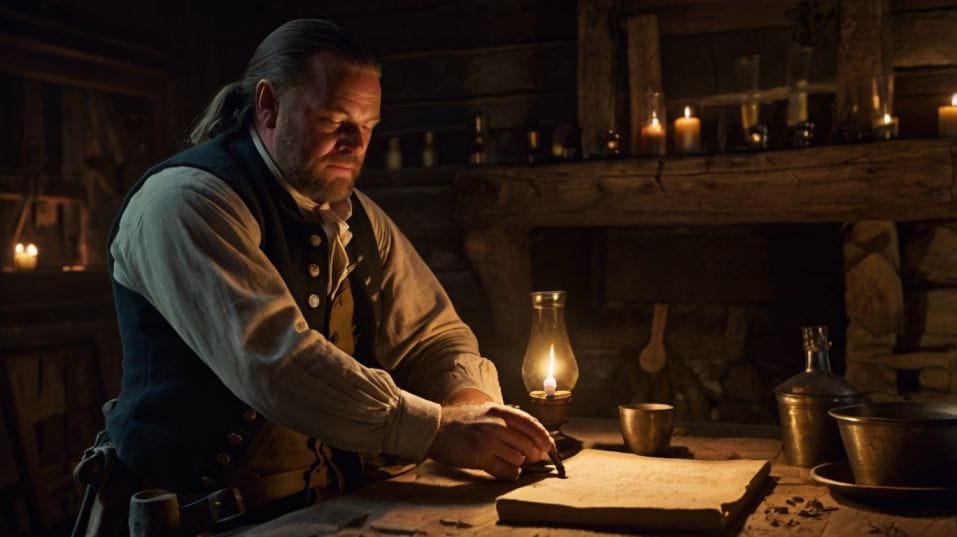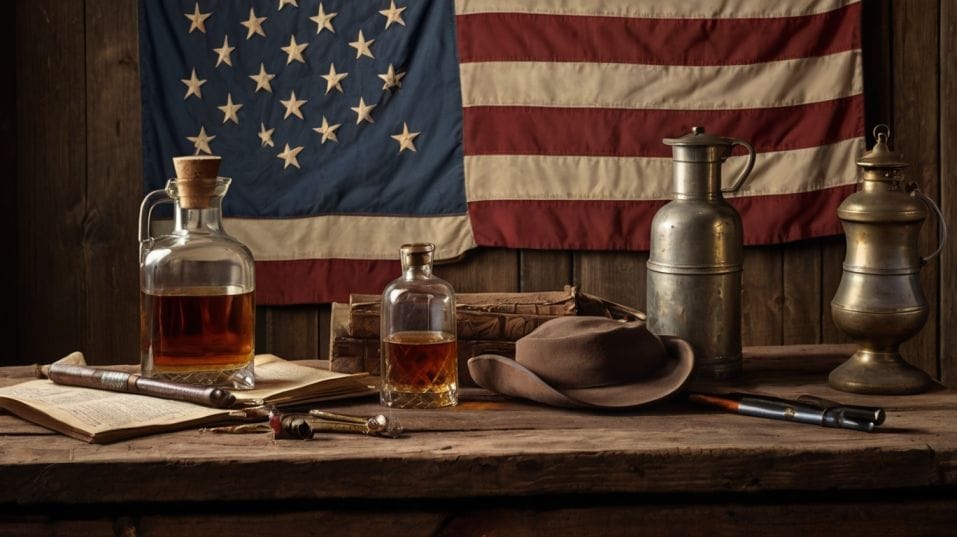How Whiskey Helped Fund the American Revolution
Discover how whiskey fueled the American Revolution—and why knowing its rebel roots helps you drink, collect, and appreciate with confidence.

What if your favorite whiskey wasn’t just a drink—but a declaration of independence? For early Americans, whiskey wasn’t about sipping notes or collecting bottles. It was survival. It was strategy.
It was rebellion in a barrel. As you begin your whiskey journey, understanding this spirit’s role in the American Revolution reveals more than history—it reshapes every pour.
Before you chase flavor, know the fight behind the flask. Because this drink once helped fund a revolution.
The Colonial Roots: Whiskey as Currency, Culture, and Protest
In the 1700s, whiskey wasn’t a drink of leisure. It was a tool. Life on the American frontier was raw—harsh weather, rugged land, poor roads, and almost no reliable coinage.
Grain would rot if it wasn’t used quickly. But ferment it, distill it, and you had something durable, tradable, and valuable.
Whiskey filled a gap that hard money couldn’t. Farmers—especially those west of the Appalachians—used it like currency.
You could trade a gallon of whiskey for livestock, tools, or labor. And since few people had easy access to banks or cash, whiskey was the economy.
Then came the taxes. First from the British, then from their own new government. The colonists’ response? Make more whiskey.
Trade it locally. Stockpile it. Fund resistance efforts with the profits. Whiskey wasn’t just a product. It was a statement: We can take care of ourselves.
If you’re starting to build a collection or develop your palate, this matters. The DNA of American whiskey isn’t elegance—it’s independence. Those early distillers weren’t chasing flavor notes. They were chasing survival.

Distillation as Defiance
Many early American whiskey makers were Scots-Irish immigrants. They brought distilling knowledge from their homelands, where homemade spirits were common, often taxed, and always personal.
In the American colonies, that tradition merged with new grains—especially corn and rye—and exploded.
These were tough people making tough whiskey. Equipment was basic. Recipes were loose. Water quality varied. But what came out of the still was potent, profitable, and politically powerful.
As the American Revolution brewed, whiskey was more than sustenance. It became a fundraiser. Patriot-aligned distillers sold their stock to support militias.
Local leaders organized whiskey auctions to bankroll weapons and supplies. In parts of Pennsylvania and Virginia, whiskey practically was the war bond.
Think about that next time you pour a rye. You’re not just drinking a spicy dram. You’re tasting the fuel of rebellion—something crafted not for ceremony but for action.
The Whiskey Tax and America’s First Armed Rebellion
Winning a revolution wasn’t the end. It was the beginning of a new set of problems—chief among them, debt.
Enter Alexander Hamilton, who saw spirits as a perfect target for a federal excise tax. In 1791, the U.S. government passed the Whiskey Tax. To urban elites, it was fair policy. To frontier distillers, it felt like betrayal.
They had risked their lives and livelihoods for liberty, and now their homemade whiskey—the very thing that kept their farms afloat—was being taxed by the same kind of distant government they’d just fought.
The backlash wasn’t subtle. Tax collectors were harassed, beaten, and run out of town. Stillhouses were fortified. Meetings turned militant.
By 1794, the Whiskey Rebellion had erupted in western Pennsylvania, complete with armed protests and federal troops marching in.
The rebellion was crushed, but the message lingered: American whiskey was born in conflict. And it remains a symbol of personal agency and self-reliance.
What This Means for Your Palate
So how does any of this help you taste whiskey better? Because every bottle—especially American whiskey—carries this context. When you know what came before, you don’t just taste for fun. You taste for meaning.
Rye Whiskey: Bold and Political
Rye whiskey, once the dominant American style, is bold, dry, and aggressive. It reflects the early American palate: functional, no-frills, and built to be traded or bartered. That punch of spice? It’s not just flavor. It’s heritage.
Bourbon: Sweetness with Substance
Bourbon, with its corn-heavy mash bill, came later. It’s sweeter, rounder, easier to love. But don’t confuse that sweetness for simplicity.
Bourbon was a product of frontier innovation, and its evolution was as political as it was practical.
The Bottled-in-Bond Act of 1897, for example, wasn’t just about quality—it was about trust. Regulation came because fake and diluted whiskey was a public health crisis.
Today, when you taste a high-proof bonded bourbon or a 100% rye, you’re engaging with that history. You’re tasting the same structural backbone that kept early America functioning—whether in trade, protest, or celebration.
Building a Smarter Collection
Understanding this legacy makes you a sharper collector. You’ll know why certain bottles matter—not because of label hype, but because of what they represent.
A classic Kentucky straight bourbon or a Pennsylvania-style rye isn’t just “old school.” It’s original. It’s the flavor profile that funded insurrection and defined a nation.
Look for distillers that honor that heritage—not through marketing buzzwords but in how they handle fermentation, mash bills, proofing, and aging. Real legacy shows up in the glass, not the bottle.
And don’t fall into the trap of chasing expensive unicorn bottles without understanding the basics. You wouldn’t skip foundational literature if you wanted to learn great writing. Same goes here.
Final Thoughts: Sip with Purpose
Whiskey didn’t just survive the American Revolution—it helped make it possible. That means every time you pour a glass, you’re part of a legacy that’s older than most countries.
You’re holding a piece of what people once used to fund freedom, challenge authority, and build something lasting.
So don’t just drink whiskey. Study it. Taste with intention. Build a collection that reflects depth, not just dollar signs. Try an underappreciated rye. Explore a bonded bourbon. Learn what makes each style distinct and what story it tells.
Because the better you understand whiskey, the better you enjoy it—and the more it gives back. This isn’t just drinking. It’s education. Start today.




